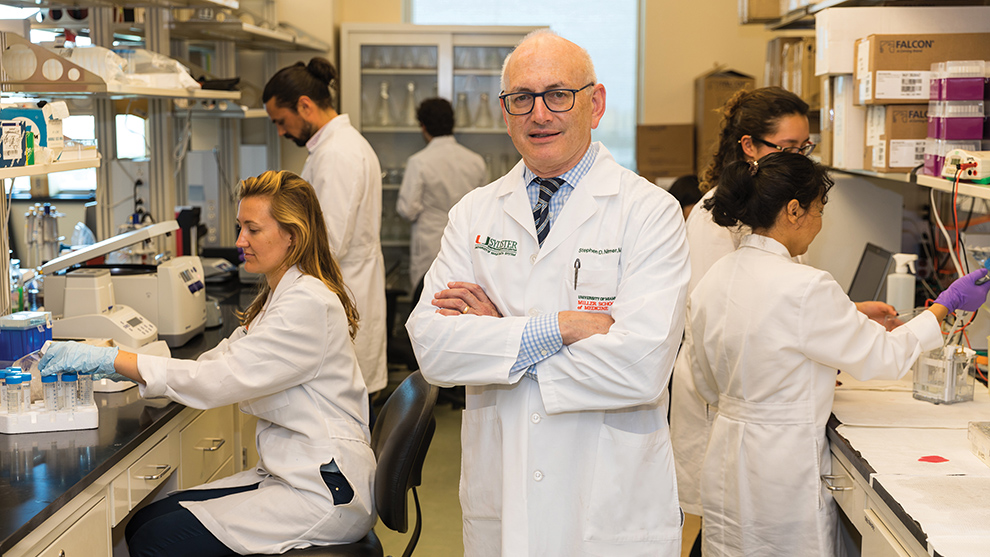Researchers at Sylvester, working within several departments at the Miller School of Medicine, have identified another critical component of the AML1ETO multi-protein complex that could point the way to more effective therapies for acute myeloid leukemia (AML). AML1-ETO (AE) is a protein generated by a chromosomal translocation that is relatively common in AML, a very aggressive cancer that remains difficult to treat effectively.
“AML1-ETO is an important driver of leukemia initiation and maintenance,” said Sylvester director Stephen D. Nimer, M.D., who led this research, which was published October 29, 2019 in Nature Communications. “AML1-ETO has been difficult to directly target. It binds to DNA tightly, an interaction that is very difficult to block.”
The Nimer lab has worked with other researchers at Sylvester, and researchers from Shanghai, for many years to identify all of the proteins that interact with AE, and then test in model systems which interacting proteins are important to the leukemia. They demonstrated a critical connection between AE, the methyltransferase enzyme p300, and a protein known as TAF1. They have elucidated that for TAF1 to bind AE, AE must be acetylated by p300. Binding of TAF1 to AE allows it to activate genes important for leukemogenesis; in their study they show that blocking the binding of TAF1 to AE, or reducing the level of TAF1 in cells that contain AE, blocks the growth of acute leukemia cells.

From a therapeutic standpoint, this could be a big deal, as keeping TAF1, and other critical interacting proteins, away from AE could mitigate its ability to influence gene expression and drive AML. In this instance, the region of TAF1 required for binding to AE was identified as its bromodomain, a common amino acid motif that governs protein/protein interactions. “TAF1 recognizes AE through its bromodomain, which is very promising,” said Dr. Nimer. “There are numerous bromodomain inhibitors that are now being tested in cancer patients.”
In the published study, the team tested a bromodomain inhibitor against TAF1 and found that it blocked TAF1-AE binding and prolonged survival in animal models of leukemia. Although the inhibitor used is not suitable for patients, these results suggest that more advanced molecules could be used therapeutically.